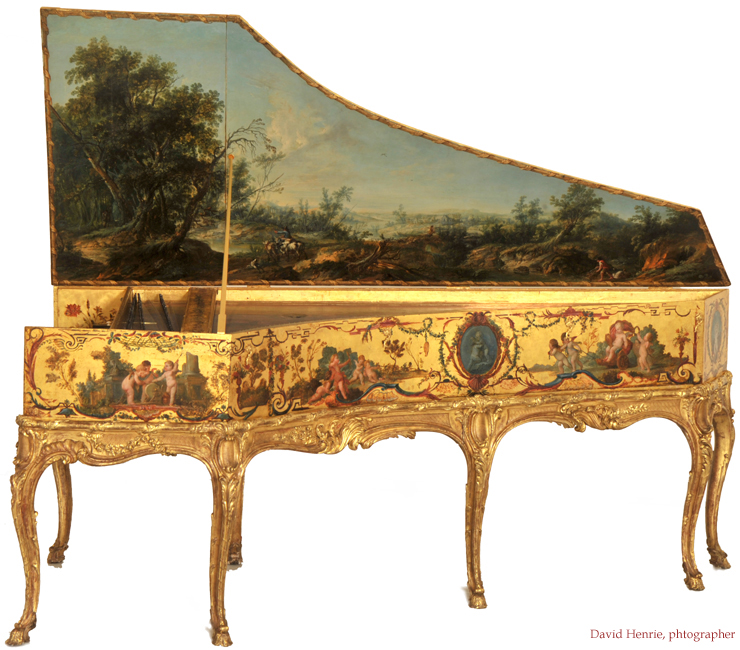Franco-Flemish double-manual harpsichord,
![]()
A view from the bentside of the instrument

This image gives a good idea of
the splendour of this harpsichord. The
inside and the outside of the case are decorated on a ground of thick gold leaf
with oil paintings on top of the gold
The stand is very fine and beautifully carved and gilded. The height of the stand is greater than normal and raises the instrument into a slightly higher playing position than normal. A possible reason for this is that it was made this high to accommodate the large skirts and dresses of the Mme de Pompadour, for whom it must have been commissioned.
What is impossible to impart here is any sense of the sound of this instrument. But the sound is full of colour, is rich and profound, is balanced and even across the compass and is clearly the reason that so much effort and expense was lavished on the instrument in the eighteenth century.
